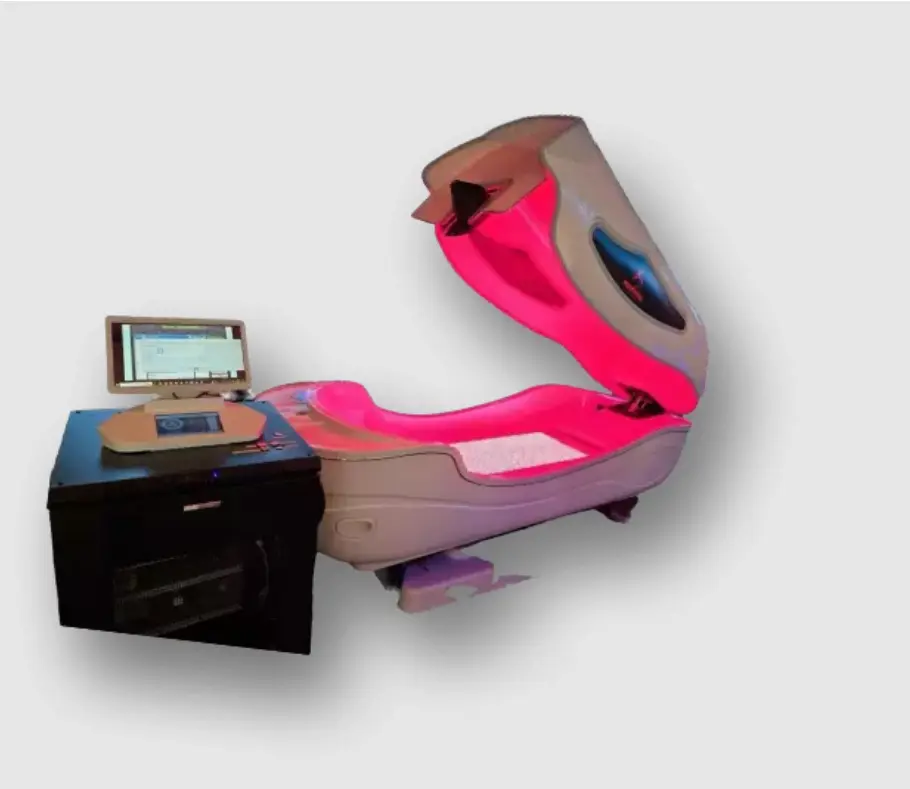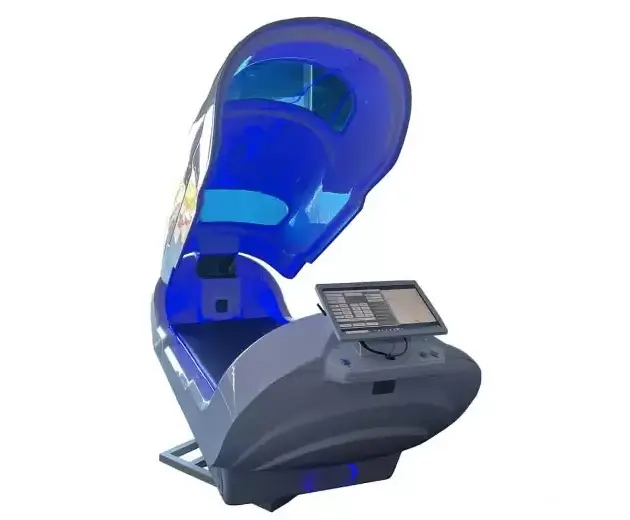Mild-Hyperbaric Oxygen Therapy shows potential as a beneficial supplementary treatment for chronic wounds. By addressing poor tissue oxygenation and inflammation, M-HBOT significantly enhances healing outcomes and improves a patient’s quality of life.
Chronic wounds, such as diabetic ulcers and pressure sores, present significant challenges in healthcare due to their prolonged healing times and susceptibility to complications. Innovative Wellness Consultants addresses these challenges with the HyperCube, a state-of-the-art Mild-Hyperbaric Oxygen Therapy (M-HBOT) chamber designed to enhance healing processes by improving tissue oxygenation and supporting cellular regeneration.
What are Chronic Wounds?
Chronic wounds are those that do not heal properly or quickly, often due to factors like sustained pressure on the skin, diabetes, or vascular disease. These wounds are characterized by impaired circulation, reduced oxygen levels in the tissues, persistent inflammation, and compromised immune responses.
Effective management of chronic wounds requires a multifaceted approach that addresses underlying causes and promotes optimal healing conditions. Conventional treatments, while essential, may not always suffice, necessitating the exploration of advanced therapies like Mild-Hyperbaric Oxygen Therapy (M-HBOT).
How M-HBOT Benefits Chronic Wounds
Mild-Hyperbaric Oxygen Therapy involves exposing patients to mild, ambient air within the HyperCube chamber. This therapy enhances the amount of dissolved oxygen in the bloodstream and tissues, facilitating several key mechanisms that promote wound healing:
- Enhanced Oxygen Delivery: By increasing atmospheric pressure, M-HBOT enhances the oxygen-carrying capacity of blood, delivering higher levels of oxygen to tissues that are often oxygen-deprived due to poor circulation.
- Stimulation of Cellular Regeneration: Oxygen is vital for cellular metabolism and the production of adenosine triphosphate (ATP), the energy currency of cells. Adequate oxygen levels promote the proliferation and function of fibroblasts, endothelial cells, and other cellular components crucial for tissue repair.
- Reduction of Oxidative Stress: Chronic wounds are often associated with increased oxidative stress, where reactive oxygen species (ROS) impair healing processes. M-HBOT has been shown to reduce oxidative stress markers such as malondialdehyde (MDA) and protein carbonyls, thereby creating a more favorable environment for healing.
- Modulation of Inflammation: Persistent inflammation in chronic wounds delays healing and increases the risk of infections. M-HBOT helps modulate inflammatory responses by reducing levels of pro-inflammatory cytokines like tumor necrosis factor-alpha (TNF-α) and interleukin-1 beta (IL-1β), while promoting the release of anti-inflammatory mediators.
- Promotion of Angiogenesis: Oxygen plays a crucial role in angiogenesis, the formation of new blood vessels essential for delivering nutrients and removing waste products from healing tissues. M-HBOT stimulates the production of growth factors such as fibroblast growth factor, promoting angiogenesis and enhancing tissue perfusion.

Studies Supporting M-HBOT
Research supporting the efficacy of M-HBOT in chronic wound management is promising. Studies have demonstrated that M-HBOT accelerates wound closure and improves healing outcomes in conditions such as diabetic foot ulcers and pressure sores.
One study aimed to evaluate the effects of hyperbaric oxygen therapy on biomarkers of oxidative stress, inflammation, and growth factors in patients suffering from chronic diabetic wounds. Over the course of 20 hyperbaric oxygen therapy sessions, conducted at a frequency of five sessions per week, participants underwent systematic monitoring of their blood samples. These samples were collected before the first session, after the 5th and 20th sessions, and a control sample was taken 28 days post-wound recovery.
Throughout the treatment period, the study observed consistent trends in biochemical parameters. Notably, while hematological parameters showed no significant changes, certain biochemical markers such as aspartate aminotransferase and creatine phosphokinase displayed progressive decreases, indicating potential therapeutic hyperbaric oxygen therapy benefits in managing tissue damage and inflammation.
Furthermore, pro-inflammatory markers such as tumor necrosis factor alpha and interleukin 1β demonstrated a gradual reduction following each hyperbaric oxygen therapy session, suggesting its role in modulating inflammatory responses associated with chronic wounds.
In terms of oxidative stress, the study noted decreases in plasma levels of various biomarkers including xanthine oxidase,extracellular superoxide dismutase, catalase, protein carbonyls, myeloperoxidase, and malondialdehyde. These reductions aligned with the observed improvement in wound healing processes, indicating hyperbaric oxygen therapy’s potential in reducing oxidative damage and promoting healing.
Moreover, hyperbaric oxygen therapy was found to elevate plasma levels of growth factors. These growth factors are crucial in promoting angiogenesis, regulating vascular tone, and enhancing tissue repair, which are vital processes for effective wound healing.
The study highlights that hyperbaric oxygen therapy exerts beneficial effects by reducing oxidative stress and inflammation, while simultaneously promoting the release of growth factors essential for tissue regeneration and angiogenesis. These findings underscore hyperbaric oxygen therapy as a potentially valuable therapeutic approach in the management of chronic diabetic wounds, offering insights into its mechanisms of action and clinical implications for improving patient outcomes.
Another study conducted a systematic review, which highlighted consistent findings across various studies, indicating significant improvements in wound healing metrics with M-HBOT compared to standard treatments alone. The systematic review assessed how hyperbaric oxygen therapy impacts wound healing and side effects in patients with acute wounds, compared to other treatments. To find randomized controlled trials, researchers reviewed five databases with entries up until March 2010. Independent researchers carried out the selection of trials, evaluated their quality, extracted the data, and synthesized the findings.
The review included five trials encompassing 360 patients. These trials examined different types of wounds and focused on various outcome parameters, precluding meta-analysis. For instance, a French trial reported significantly higher healing rates with hyperbaric oxygen therapy compared to sham treatment for crush wounds. The treatment also reduced the need for additional surgical procedures and tissue necrosis. An American trial demonstrated accelerated healing of burn wounds with hyperbaric oxygen therapy versus routine care. A British trial showed hyperbaric oxygen therapy significantly improved healthy split skin graft areas.
Conclusion
Healthcare providers and wound care specialists are encouraged to consider integrating Mild-Hyperbaric Oxygen Therapy into comprehensive treatment plans for chronic wounds. The HyperCube by Innovative Wellness Consultants represents a sophisticated solution designed to optimize therapeutic outcomes and enhance patient well-being. Staying informed about the latest advancements and clinical evidence empowers healthcare professionals to confidently explore the benefits of M-HBOT in their practice.
Innovative Wellness Consultants remains committed to advancing therapeutic options, ensuring patients receive state-of-the-art care for optimal healing outcomes.






